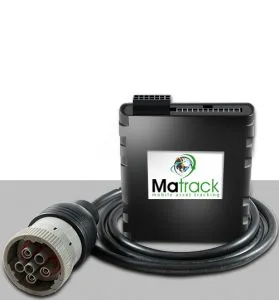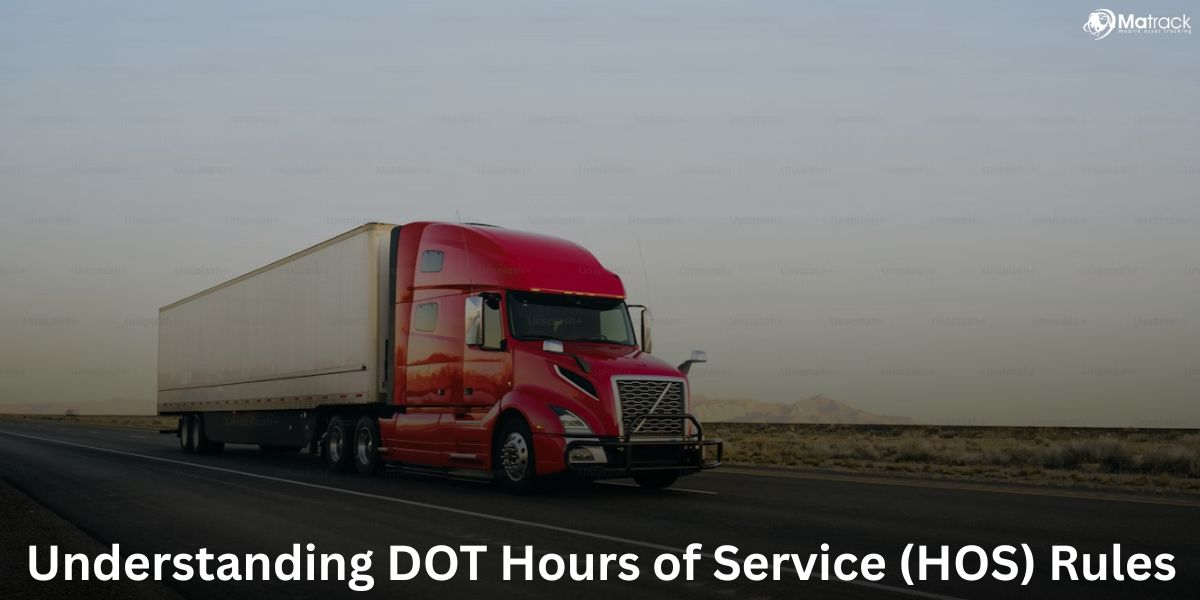Key Takeaways:
- Start every trip with a thorough pre-trip inspection to ensure the truck is road-ready and prevent mechanical failures.
- Stay alert by following Hours-of-Service (HOS) rules and minimizing distractions to reduce fatigue-related accidents.
- Drive defensively by maintaining safe distances, adjusting for weather, and securing cargo to prevent collisions and rollovers.
- Leverage GPS fleet trackers and ELD systems for better navigation, compliance, and real-time safety monitoring.
15 Safety Tips For Truck Drivers In 2025
1. Conduct a Thorough Pre-Trip Inspection
Before hitting the road, performing a comprehensive vehicle inspection is mandatory. Check the following components:
- Brakes: Ensure they function properly to prevent failures on steep inclines.
- Tires: Look for proper inflation, wear, and damage.
- Lights & Signals: Confirm that headlights, taillights, and turn signals work.
- Mirrors & Windshield: Ensure clear visibility and adjust mirrors to eliminate blind spots.
- Load Security: Verify that cargo is properly secured to prevent shifting.
Neglecting a pre-trip inspection can lead to mechanical failures and serious accidents.
2. Follow Hours-of-Service (HOS) Regulations
Fatigue remains one of the leading causes of truck accidents. The Federal Motor Carrier Safety Administration (FMCSA) enforces strict Hours-of-Service (HOS) regulations, which include:
- 11-hour driving limit: A driver can drive a maximum of 11 hours after 10 consecutive off-duty hours.
- 14-hour rule: Drivers cannot drive beyond the 14th hour after starting work.
- 30-minute break: Required after driving for 8 consecutive hours.
- 70-hour weekly limit: Drivers must take at least 34 consecutive off-duty hours after reaching the limit. Know more about: DOT 70-Hour Rule.
Ignoring HOS rules can lead to penalties and increased risk of fatigue-related accidents.
3. Stay Alert and Avoid Distractions
Distracted driving is one of the biggest threats on the road. In 2025, stricter regulations prohibit:
- Using handheld devices: Truck drivers must use hands-free technology.
- Eating while driving: Can lead to loss of control in emergencies.
- Operating infotainment systems excessively: Adjusting GPS or radio while driving can divert attention from the road.
GPS fleet tracker minimizes distraction by providing real-time navigation, hands-free route updates, and driver behavior alerts, ensuring quicker reaction times in unexpected situations.
4. Maintain a Safe Following Distance
Trucks require significantly more stopping distance than smaller vehicles. Maintain at least:
- 7-8 seconds of following distance in normal conditions.
- 10 seconds or more during adverse weather (rain, snow, fog).
- Extra space when carrying heavy or shifting cargo.
Following a safe distance helps prevent rear-end collisions and allows time to react to sudden stops.
5. Adjust Driving for Weather Conditions
Truck drivers must adapt to weather conditions to ensure safety. Key precautions include:
- Slow down in rain, fog, or snow to prevent hydroplaning or skidding.
- Use low-beam headlights in fog for better visibility.
- Avoid sudden braking on icy roads to prevent jackknifing.
Always check weather forecasts before starting your trip and plan accordingly. Read more: Adverse Driving Conditions Exception.
6. Understand and Manage Blind Spots
Truck blind spots, or “no-zones,” are areas where other vehicles disappear from view. Major blind spots include:
- The front of the truck (20 feet ahead).
- Directly behind the trailer (up to 30 feet).
- Along the sides, especially the right-hand side.
To prevent collisions:
- Use side mirrors frequently to scan for vehicles.
- Signal lane changes early to warn surrounding drivers.
- Avoid lingering in another vehicle’s blind spot when passing.
Being aware of blind spots significantly reduces the risk of accidents.
7. Plan Routes and Rest Stops in Advance
Proper route planning prevents delays, unexpected detours, and fatigue. Use GPS and trucking-specific apps to:
- Check for road closures and construction zones.
- Find truck-friendly rest areas for breaks.
- Locate fueling stations and weigh stations ahead of time.
A well-planned route reduces stress and enhances safety during long-haul trips.
8. Keep Emergency Equipment Onboard
Being prepared for roadside emergencies is crucial. Essential emergency supplies include:
- First-aid kit
- Fire extinguisher
- Reflective warning triangles
- Flashlight and extra batteries
- Tire chains (for winter driving)
Having emergency gear ensures quick responses to unexpected situations.
9. Use Defensive Driving Techniques
Defensive driving minimizes accident risks by anticipating potential hazards. Key strategies include:
- Scanning the road 12-15 seconds ahead to identify dangers early.
- Being cautious at intersections, where many collisions occur.
- Expecting the unexpected from other drivers, especially those unfamiliar with truck blind spots.
Defensive driving keeps you and others safe on the road.
10. Secure Your Load Properly
Improperly secured cargo can cause rollovers, load shifts, or road hazards. Always:
- Use strong straps, chains, and tie-downs to prevent movement.
- Balance the load evenly to maintain vehicle stability.
- Inspect cargo regularly to ensure nothing has shifted during the trip.
Properly securing loads reduces the risk of accidents and lost cargo.
11. Monitor Road Signs and Speed Limits
Truck-specific road signs provide critical safety information. Always:
- Observe weight limits on bridges and roads.
- Follow truck-specific speed limits, which may differ from cars.
- Watch for low-clearance bridges and tunnels to avoid collisions.
Ignoring road signs can result in serious accidents and hefty fines.
12. Stay Hydrated and Eat Healthy
Long hours on the road can lead to fatigue and poor health. Stay alert by:
- Drinking water regularly to prevent dehydration.
- Eating nutritious meals instead of relying on fast food.
- Taking short breaks to stretch and reduce muscle stiffness.
Healthy habits contribute to long-term trucking safety and performance.
13. Avoid Aggressive Driving
Aggressive driving increases accident risks and stress levels. Prevent road rage by:
- Maintaining patience in heavy traffic.
- Avoiding unnecessary honking or tailgating.
- Letting reckless drivers pass instead of engaging them.
Staying calm on the road promotes a safer and more enjoyable driving experience.
14. Be Cautious When Backing Up
Backing up a truck is one of the most dangerous maneuvers. Reduce risks by:
- Using backup cameras and mirrors to check blind spots.
- Exiting the cab to inspect surroundings before reversing.
- Backing up slowly and using a spotter when available.
Proper backing techniques prevent accidents in parking lots and tight spaces.
15. Perform a Thorough Post-Trip Inspection
A post-trip inspection is just as important as a pre-trip inspection. It helps identify issues that may have developed during the journey, ensuring the truck is ready for the next trip. Key areas to inspect include:
- Brakes and tires for excessive wear or damage.
- Lights and signals to confirm they are still functioning.
- Fluid levels (oil, coolant, brake fluid) to check for leaks.
- Trailer and cargo area for any signs of shifting or damage.
- Under the truck for loose or damaged parts.
Reporting any problems immediately allows for timely repairs, reducing downtime and preventing future mechanical failures.
How Matrack ELD Enhances Truck and Driver Safety

Matrack ELD empowers drivers and businesses to maintain safety, efficiency, and peace of mind on the road.
- Real-Time GPS Tracking: Provides optimized routes, helping drivers avoid traffic, construction, and hazardous areas.
- Vehicle Diagnostics Monitoring: Alerts drivers to mechanical issues like low tire pressure or engine faults, preventing breakdowns and ensuring vehicle reliability.
- Hours of Service (HOS) Compliance: Tracks driving hours to ensure rest schedules, reducing fatigue and improving driver safety.
- Geofencing and Alerts: Notifies drivers of unsafe zones or route deviations, keeping them aware and secure.
- Driver Behavior Monitoring: Tracks speed, harsh braking, and acceleration patterns to encourage safer driving habits.
- Automated Logs and Reports: Simplifies compliance with accurate trip histories and operational insights.
- Emergency Assistance Features: Provides tools to support drivers in emergencies, enhancing overall safety.
Conclusion
Truck driving in 2025 comes with its own set of challenges, but staying safe on the road is all about preparation and awareness. Following these 15 safety tips helps prevent accidents, reduces risks, and keeps drivers in compliance with regulations.
Technology like GPS fleet trackers and ELD systems plays a big role in improving safety, but responsible driving is just as important. A well-maintained truck, a well-rested driver, and smart decision-making on the road can make all the difference.



